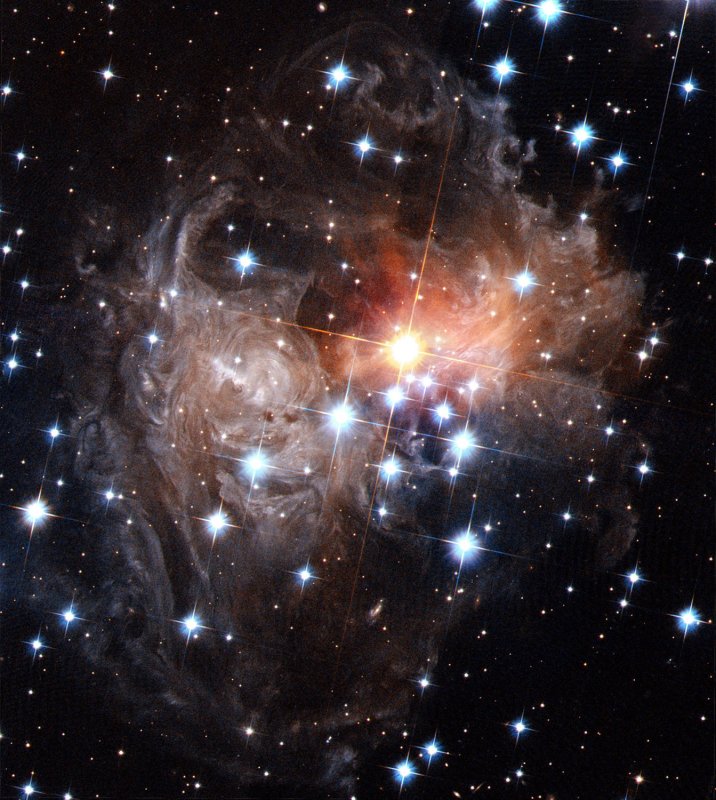This NASA Hubble space telescope images from September 2006 shows variable star V838 Monocerotis near the edge of the Milky Way Galaxy, about 20,000 light-years from our sun. This picture spans about 14 light-years and shows swirls of dust surrounding star V838 Mon which researchers believe is a young binary star. (UPI Photo/NASA/ESA/H. Bond) |
License Photo
WASHINGTON, Jan. 10 (UPI) -- A new type of hypervelocity stars, announced at a recent American Astronomical Society near Washington, has stumped astronomers.
Hypervelocity stars move so fast that they leave the Milky Way altogether. Astronomers said they think they can explain the 18 hypervelocity stars discovered since 2005, but a new group of 20 such stars, announced at a meeting of the American Astronomical Society outside of Washington, don't seems to make sense, Time magazine reported Friday.
"What's going on?" Vanderbilt University grad student Lauren Palladino, lead author of a paper published in the Astrophysical Journal on the stars, said. "We don't know."
Astronomers all agree that hypervelocity stars begin with a pair of binary stars giving each other lots of angular momentum as they orbit. When a binary gets too close to the black hole at the core of the Milky Way, one star is swallowed and the other keeps most of the momentum -- along with the black hole's gravity -- and slingshots outward, Time said.
Palladino and several colleagues also searched for smaller, sun-like stars racing toward the Milky Way's edge as well, finding that some rogue stars they found were coming from random directions, not the galactic center.
Theorists suggest a few ideas about what might have propelled these hypervelocity stars from their orbital path and sent them hurdling toward intergalactic space. Among the scenarios: They were spun out by a gravitational slingshot effect inside dense clusters of stars, or they were whipped to high speed by being too close to an exploding supernova, Time said.
Investigators say these explanations aren't very persuasive.
"It's very hard to kick a star out of the galaxy," said Kelly Holley-Bockelmann, Palladino's adviser and a co-author of the paper.















